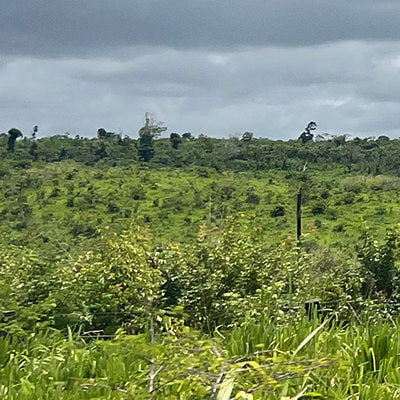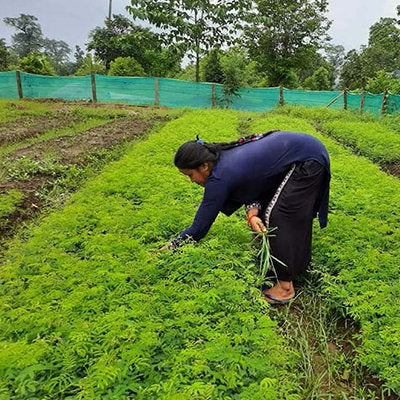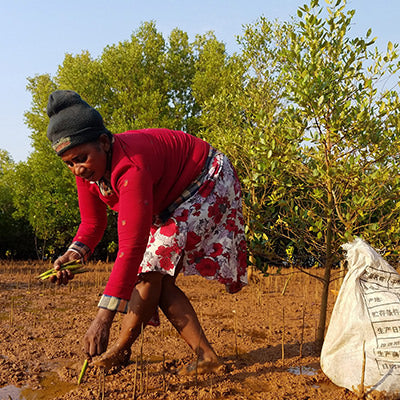Why do we plant trees? In short: they bind greenhouse gases, mitigate the consequences of natural disasters, preserve biodiversity and promote local social development.
We regularly fund nature projects to support the planting, care and
guarding of the trees.
We regularly receive detailed reporting including GPS coordinates and images to track exactly where the trees were planted and how they help nature and the population. This is how we regularly see the progress that our support brings with it.
Projects supported to date include planting sites in Nepal, Madagascar, Mozambique, Kenya, Ethiopia, Indonesia, Haiti, Brazil and Honduras. The emotional impressions on site motivate us every time to stick to our mission. That's why we don't want to withhold them from you!
Araribóia Indigenous Territory planting site
Coordinates: 5°15’40.7”S, 46°41’39.6”W
Encompassing the Amazon rainforest, the Cerrado savanna, and thousands of miles of mangrove coastline, Brazil is one of the most biodiverse countries in the world. These habitats are home to fifteen to twenty percent of the world’s diversity including the blond capuchin monkey, the maned three-toed sloth, and the golden parakeet.
By reforesting this degraded area with native tree species, local villagers will protect vulnerable flora and fauna and reduce poverty and food insecurity in the Guajajaras community. The Eden Brazil team plans to plant approximately 1,085,920 trees over two years.
Lape planting site
Coordinates: 27°46’14.03”N, 84° 5’33.87”E
Nepal is a diverse nation where Chitwan National Park alone hosts more than 700 species of wildlife. Yet, they are subject to more significant environmental hazards, perpetuating high levels of inequality. In a country where gender inequality is pervasive, we have cultivated a project where the local leadership team is composed entirely of women. Also, planting and nursery management teams have a women majority.
The Lape planting site comprises 145 hectares of degraded tropical and subtropical forest in the Nawalpur District of Nepal. Nawalpur District’s landscape is diverse, ranging from the lowland Terai plains to peaks over 1,500 meters in the Churia Hills.
Akalamboro planting site
Coordinates: 16°12’34.48”S, 44°59’26.88”E
Deforestation has long been an issue for Madagascar. It is one of the world’s top biodiversity conservation priorities because of its high concentration of endemic species and severe habitat loss rates. We initiated our Madagascar reforestation project in 2007 and have now successfully planted more than 600 million mangrove and dry deciduous trees.
Akalambro restoration area is located on a lowland mangrove forest along the Akalamboro Estuary surrounding the Akalamboro community in northwest Madagascar.
As you can see, planting trees is not a marketing strategy for us , but an essential component in protecting the climate and thus our planet. We will therefore continue to reforest bar by bar and tree by tree, support climate protection and give the local population of our project locations new perspectives.
So that every beep at the checkout becomes a signal for a better world.
The United Nations Sustainable Development Goals are an urgent call for action by all countries - developed and developing - in a global partnership. They recognize that ending poverty and other deprivations must go hand-in hand with strategies that improve health and education, reduce inequality and spur economic growth - all while tackling climate change and working to preserve our oceans and forests. If you wish to view the impact of each SDG in more detail please click here.
End hunger, achieve food security & improved nutrition & promote sustainable agriculture
Promote sustained, inclusive ,full, productive employment & decent work for all


